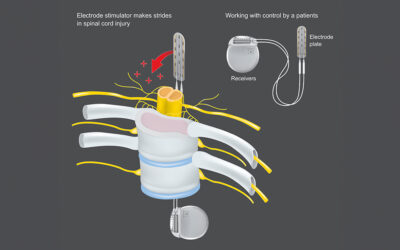Although tens of millions of Americans turn to muscle relaxants for lower back pain relief, a new Australian review finds little evidence that such drugs actually work.
That’s the conclusion of a deep-dive into 31 prior investigations, which collectively enlisted more than 6,500 lower back pain patients. Enrolled patients had been treating lower back pain with a wide range of 18 different prescription muscle relaxants.
But while the studies suggested that muscle relaxants might ease pain in the short term, “on average, the effect is probably too small to be important,” said study author James McAuley. “And most patients wouldn’t be able to feel any difference in their pain compared to taking a placebo, or sugar pill.”
Another concern: Beyond their ineffectiveness, “there is also an increased risk of side effects,” cautioned McAuley, director of the Centre for Pain IMPACT with the University of New South Wales’ School of Health Sciences in Sydney.
Such side effects can include dizziness, drowsiness, headache and/or nausea, in addition to the risk that patients will develop a lingering addiction.
McAuley said his team was surprised by the findings, “as earlier research suggested that muscle relaxants did reduce pain intensity. But when we included all of the most up-to-date research the results became much less certain.”
One problem is that much of the research “wasn’t done very well, which means that we can’t be very certain in the results,” McAuley said.
For example, none of the studies explored long-term muscle relaxant use. That means the Australian team could only assess muscle relaxant effectiveness during two time frames: throughout an initial two-week regimen and between 3 to 13 weeks. In the first instance, they found low evidence of an insignificant pain relief benefit; in the second instance, they found no pain intensity or disability relief benefit whatsoever.
McAuley’s take-away: “There is a clear need to improve how research is done for low back pain, so that we better understand whether medicines can help people or not.
“Low back pain is extremely common. It is experienced by 7% of the global population at any one time. Most people, around 80%, will have at least one episode of low back pain during their life,” McAuley noted.
But because it’s often very difficult to isolate a precise cause, many treatments — including NSAIDs, opioids, exercise therapy and/or counseling — aim to control pain rather than provide a cure. Muscle relaxants — prescribed to 30 million Americans in 2020 — fall into that category, McAuley said.
Given that muscle relaxants provide neither a cure nor pain relief, there’s “a clear need to develop and test new effective and cost-effective treatments for people with low back pain,” he said.
In the meantime, McAuley says a move is underway to “de-medicalize” lower back pain treatment by embracing techniques that focus on alternatives to medicine or surgery.
For example, “we know that people with low back pain should avoid staying in bed,” he noted, “and they should try to be active, and continue with usual activities, including work, as much as they can.
“People with recent onset low back pain should be provided with advice and education about the low back pain,” McAuley added. “[And] they should be reassured that they do not have a serious condition, and that their low back pain is very likely to improve over time, whether or not they take medicines or other treatments.”
He and his colleagues reported their findings in the July 7 issue of BMJ.
“The problem is, back pain has so many causes,” said Dr. Daniel Park, an associate professor in the department of orthopedics with Oakland University’s William Beaumont School of Medicine in Rochester, Mich.
So when it comes to treatment, “there is no one-size-fits-all,” stressed Park, who is also a spine surgeon at Beaumont Hospital-Royal Oak.
Still, Park thinks that when it comes to muscle relaxants, “there probably is a place for short-term benefit to help patients manage severe pain.”
For example, he suggests patients with “muscle strain from overdoing it,” or those with a herniated disc may actually benefit from short-term muscle relaxant use.
But patients with garden-variety back pain from a degenerative disc? Not so much.
Regardless, long-term pain relief is unlikely, regardless of the source of the problem, Park noted.
“Long-term, therapy and core strengthening will be much more beneficial,” Park said, while every effort should be made to identify the specific cause, and to minimize the risk for a chronic condition, permanent damage and enduring discomfort.
More information
There’s more on back pain at the U.S. National Institute of Neurological Disorders and Strokes.
SOURCES: James McAuley, PhD., director, Centre for Pain IMPACT, School of Health Sciences, Faculty of Medicine, University of New South Wales, Sydney, Australia, and senior research scientist, Neuroscience Research, Randwick, Australia; Daniel Park, MD, associate professor, department of orthopedics, Oakland University William Beaumont School of Medicine, and spine surgeon, Beaumont Hospital-Royal Oak, UnaSource Surgery Center, Oakland Regional Hospital, Rochester, Mich.; BMJ, July 7, 2021



